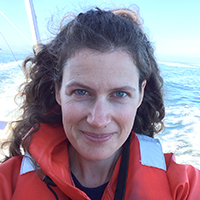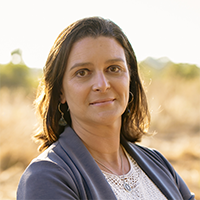New Technical Advisory Panel Will Provide Scientific Guidance on 30×30 for Coastal Waters
A Science-informed Approach to 30×30
California’s coast and ocean are threatened by the twin crises of climate change and biodiversity loss. Conserving 30% of our coastal waters by 2030 (the “30×30” initiative) will help build resilience to climate change and protect our state’s precious natural resources. To ensure that conservation results in meaningful benefits for both biodiversity and people, OPC is committed to taking a science-informed approach to 30×30.
16% of California’s coastal waters, the area currently covered by the state’s marine protected area (MPA) network, is already considered conserved per the definition of conservation set forth in Pathways to 30×30: Accelerating Conservation of California’s Nature. To conserve an additional half a million acres by 2030, OPC is spearheading action across four fronts: adaptively managing the MPA network to ensure it continues to provide strong protections for coastal and marine biodiversity, especially in the face of climate change; working with federal partners to strengthen biodiversity protections in California’s National Marine Sanctuaries; exploring the role of other spatial management measures (beyond MPAs and Sanctuaries) in protecting biodiversity; and supporting tribally-led conservation.
Each of these approaches will benefit from clear scientific guidance to translate policy objectives for 30×30 Conserved Areas – such as durability, effective management, and biodiversity benefits – into clear and objective criteria. In particular, criteria need to be developed to qualitatively and/or quantitatively assess the extent to which existing spatial management measures beyond MPAs and Sanctuaries, such as water quality protected areas or fisheries management measures, meet the definition of a 30×30 Conserved Area.
Introducing the 30×30 Technical Advisory Panel
To accomplish this, OPC has partnered with the California Ocean Science Trust (OST) to convene a 30×30 Technical Advisory Panel. Panel members were identified by soliciting informal nominations from the OPC Science Advisory Team, as well as OST’s and OPC’s scientific networks, in consultation with OPC staff. Members include leaders in marine ecology, fisheries, marine spatial planning, and environmental justice:

Dr. Jenn Caselle
UC Santa Barbara
Marine Ecology and Conservation,
MPA Design and Evaluation

Dr. Chris Free
UC Santa Barbara
Fisheries, Resource Use,
Climate Change Impacts

Dr. Kirsten Grorud-Colvert
Oregon State University
Functional Ecosystems,
Area-based Management

Dr. Tessa Hill
UC Davis
Climate Refugia,
Geospatial Patterns of Climate Stressors

Dr. Arielle Levine
San Diego State University
MPA Planning, Fisheries,
Community Involvement

Dr. Katherine Seto
UC Santa Cruz
Equitable Conservation,
Marine and Coastal Governance,
Marine Resource Management and Policy
Next Steps and Opportunities for Public Engagement
The Technical Advisory Panel held an introductory kickoff meeting this past month and will reconvene in early 2024 to begin drafting criteria for evaluating potential 30×30 Conserved Areas. OPC will also solicit recommendations from the Technical Advisory Panel regarding approaches to addressing data gaps related to 30×30, as detailed in Pathways to 30×30 Appendix E. This will inform future research projects, helping to answer critical questions that may arise during the 30×30 process.
Draft criteria for 30×30 Conserved Areas will be released in early summer 2024 for public comment. Throughout the public comment period, OPC will hold regional workshops across the state to provide opportunity for discussion and feedback on the draft criteria and how they could be applied to existing spatial management measures. Stay tuned for more updates as we finalize our 2024 workshop schedule!
To follow OPC’s progress on 30×30, visit our 30×30 webpage, follow us on social media, and sign up for emails.

